Filling the Gap: AMOLED and LCD from 2010 to 2012
by Joshua Ho on July 26, 2014 6:00 AM ESTHTC Rezound
The Rezound is one of the last devices that hit the market before devices regularly saw color accuracy testing and closer evaluation of grayscale performance. Subjectively, this display is still great even today. While the Rezound’s display is supposedly S-LCD (implying *VA), the viewing angles are much better than what was seen on the Desire HD. The one issue here is that the display isn’t laminated to the glass lens, so at extreme angles the display quality isn’t as good as what we see on S-LCD2 or S-LCD3 from phones like the HTC One X. At any rate, it’s very obvious that HTC has put a large emphasis on display with this device.
While luminance is dramatically improved over the Desire HD, I suspect that brightness was clamped to some extent again to alleviate battery life issues. Contrast isn’t great here either, at 733:1. As before, there’s no dynamic contrast active here to try and artificially boost contrast. Modern LCD displays have around 1000:1 typical contrast, so this is just a bit worse, all things considered.
HTC definitely didn’t do a perfect job in grayscale once again, as there’s still too much blue and green, but white point is at a reasonable level compared to the wildly unbalanced white points that we saw with the Galaxy S2. Things are also significantly improved here relative to the Desire HD.
In the saturation sweep, HTC did an incredible job calibrating the display. It’s quite clear to me that HTC made display a priority with this device. There’s a hint of saturation compression, but overall things are very close to perfect. This is definitely a leap ahead of AMOLED at the time.
Unfortunately, the Rezound falls a bit flat in the ColorChecker. Poor grayscale calibration definitely didn’t help with the average, although there is significant error elsewhere. Of course, this is from the lens of the present. At the time, it seems that HTC was making a concerted effort to do things right, even though no one was truly paying attention to display accuracy yet and reviewers seemed to be impressed by blue white points and intensely oversaturated colors.
Final Words
Looking through this new information, understanding the past is now much easier in terms of display. While I was only able to test Samsung and HTC devices, they serve as a relatively accurate barometer for trends in the rest of the industry. As the past is an excellent predictor for the future, a few trends are evident. First, AMOLED has had far more progress than LCD, although checkered due to the pressure for higher pixel density displays and relatively little pressure (at first) to improve color accuracy. Second, while LCD has been slower to advance it has also started at a far better place. One of the chief issues seems to have been controlling gamma/grayscale color balance, although this has been steadily improving throughout the industry. Color gamut and saturation sweep accuracy has generally been acceptable in LCD, although there seems to be a bit of a cyclical relationship as consumers favor wildly inaccurate colors for showroom appeal. LCD seems to have stagnated in contrast, with relatively little change in static contrast ratios over the past few years, and brightness seems to be limited to around 600 nits in practice, barring unconventional subpixel layouts.


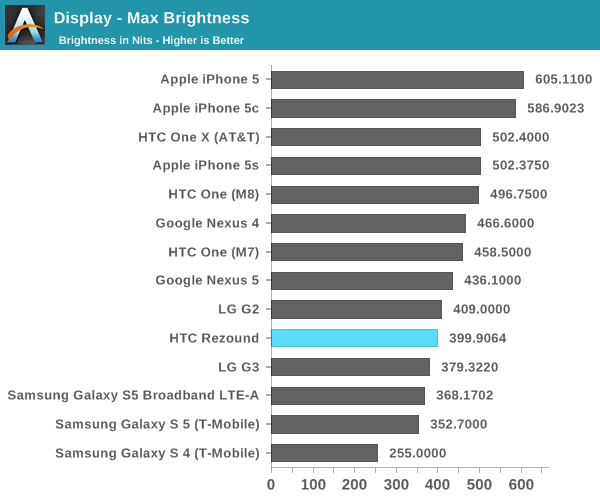
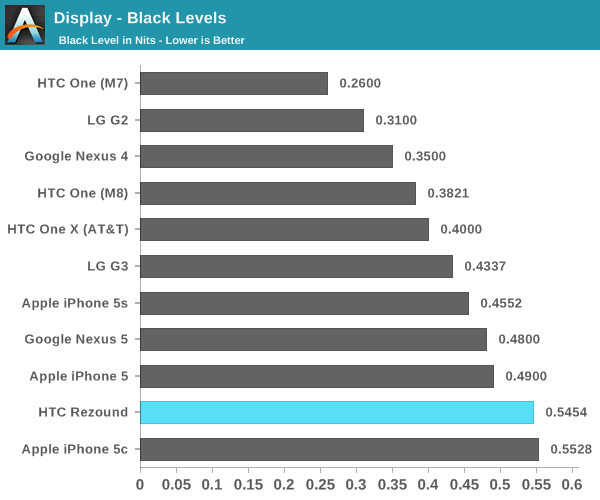
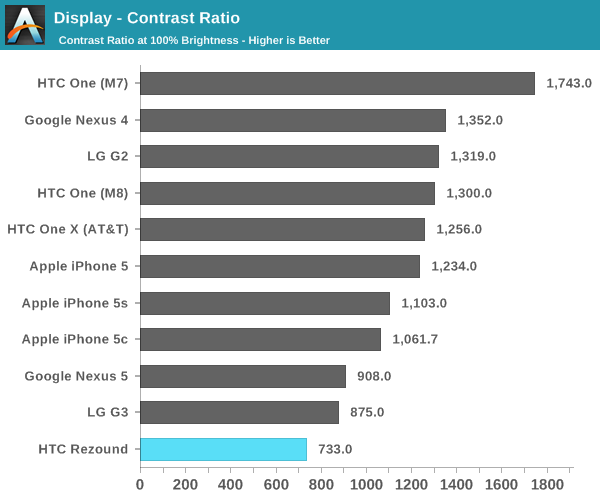
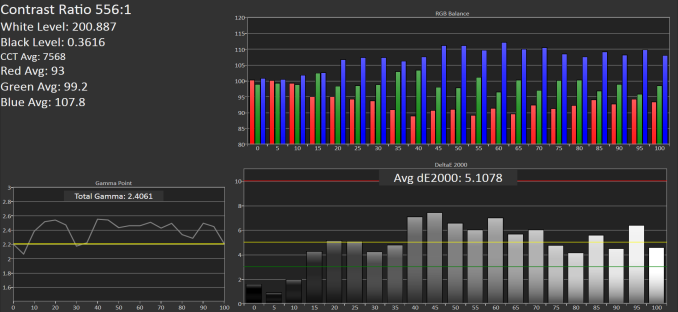
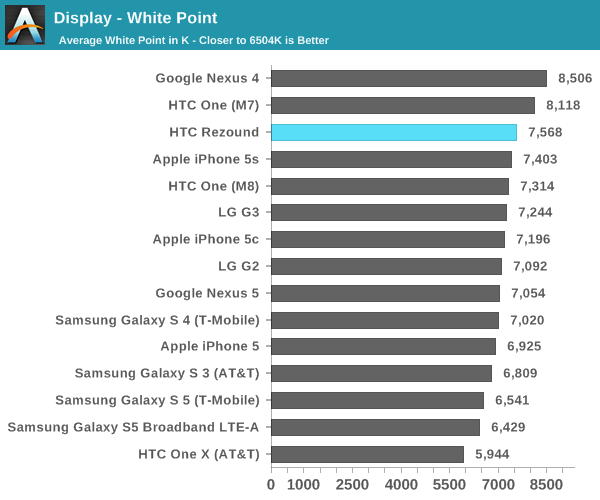

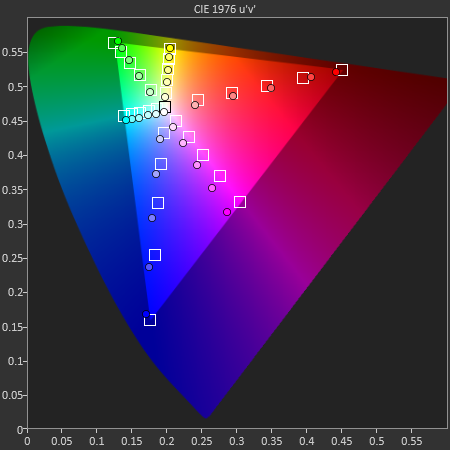
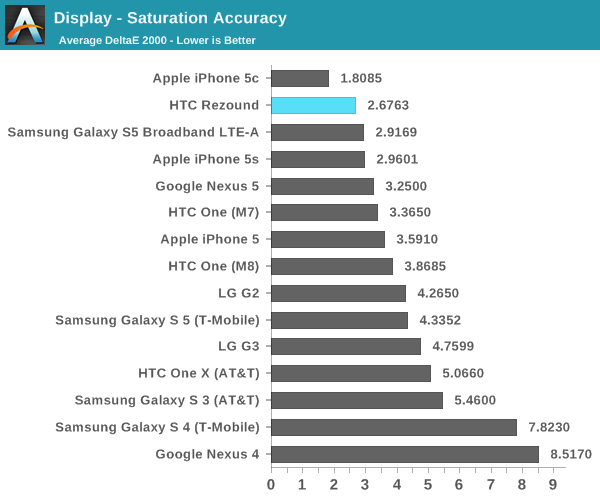

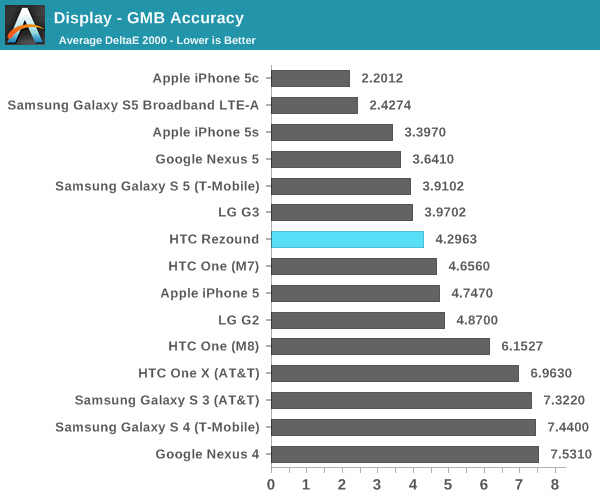








72 Comments
View All Comments
jabber - Sunday, July 27, 2014 - link
I beg your pardon? Please explain a little more?SentinelBorg - Monday, July 28, 2014 - link
Samsung phones since the S2 have different color modes you can choose from. The movie/video/cinema/whatever mode is usually the one closest to sRGB. No need to root it.plonk420 - Saturday, July 26, 2014 - link
still waiting for oLED monitors, considering SED is dead... : /extide - Tuesday, July 29, 2014 - link
What do you mean waiting for OLED? OLED has been around for a while, I mean.. this article...Alexey291 - Saturday, July 26, 2014 - link
I still find it funny that anand is trying so hard to push display accuracy.Except for the 3.5 anon-geeks commenting on this website nobody cares. People like pretty colours not "perfect colour accuracy" on a 4.3" (or even 5" - either way the size is tiny). Nobody ever ran the sammy displays in movie mode. Everyone who knows how - turns on Dynamic instantly because its simply prettier to look at.
But yeah rgb colours or whatever. They matter or something.
jwcalla - Saturday, July 26, 2014 - link
I agree that color accuracy is of no consequence to me (and probably most others) on a smartphone. I don't even necessarily consider it a positive benefit which is why I find these articles here somewhat mystifying.name99 - Saturday, July 26, 2014 - link
Accuracy matters if you use multiple devices in your life. For example it was very clear to me (and I'm not an artist or a color snob) that the contacts photos on my iPhone 1 looked different from the contacts photos on my iMac 2007. (Of course these were the same photos, being shared through iTunes.) It's not a big deal, but these are things you see every day, and it's irritating that the one you see seems redder than the other one you see.Obviously it's less of an issue for a movie you see once and never again, but it's something noticeable for things you see every day, and humans are probably more attuned to precise details of faces than anything else.
FWIW Apple seems to have got this right now (at least it's no longer so bad that I notice it every day even without trying). I assume that's a combination of newer HW (both the iMac and the iPhone have been upgraded) and perhaps some behind-the-scenes SW upgrades.
Alexey291 - Saturday, July 26, 2014 - link
I tend to (personally - so not implying that its the same for literally everyone) find that I generally get used to the worst screens given time.Aside from all my other gadgets (some of which have really good screens both amoled and IPS) I currently own a chromebook HP14 - yes the one with a godawful TN panel.
Honestly its been some months and these days I don't even notice. And I use the said chromebook a lot. But yeah its a case of YMMV for sure :)
Streamlined - Saturday, July 26, 2014 - link
It matters if you ever intend to print your camera photos. Imagine "fixing" a picture of the sunset to print the phot and it's either too saturated or to pale because your crappy phone was off base.JoshHo - Saturday, July 26, 2014 - link
For the most part, color calibration matters any time content is shared. For example, you could buy something that looks fine on your display, but the color is horrible in person. Similarly, with inaccurate displays you just don't know if other people will see the photo the way it appears on the phone.There is reason and logic behind display accuracy, and it certainly isn't a niche feature for a select few. There are use cases that apply to everyone. Samsung is probably doing the right thing by including a calibrated cinema/movie mode and the dynamic/standard modes depending upon personal preference.
I hope this helps with understanding why display accuracy matters.